Since we bought our Kia Soul EV in December, the Holy Grail of trips has been Charlottetown to Halifax, that being the far reaches of our need to travel by car. We don’t go to Halifax often–perhaps once or twice a year–but I was determined that if we were going to go we’d not leave our EV at home in favour of a gasoline-powered car.
This week was our chance to seek this Holy Grail, and it went flawlessly.
We started with a 100% charge from our home-based level 2 charger on Monday morning at 8:15 a.m., driving east to Wood Islands where we caught the 9:30 a.m. ferry.
On the other side we drove to Stellarton to the level 3 “fast charger” at the Needs gas station, a Flo charger of the type similar to those recently installed on PEI.
We started charging at 10:22 a.m. and got to 80% by 10:33 a.m. and then, feeling a little nervous about the distance for the next leg, plugged back in from 10:37 to 10:45 to get up to 90% (the rate of charge slows as you reach 100%). Total cost of the Stellarton stop was $4.35.

We continued onward through Truro to Stewiacke, where an Apple Maps routing incident left us looking for a charger in the middle of a forest; switching to Google Maps got us to the right location, a few kilometres up the road at the Petro-Can.
While the Flo charger required a Flo account to use, the Petro-Can charger didn’t: a credit card was all that was needed, with the receipt optionally sent to my mobile number.
We started charging at 1:00 p.m. and finished up at 1:16 p.m., at 81% charge, with a total cost of $3.79.
The charge cable and plug on the Petro-Can charges is hefty:
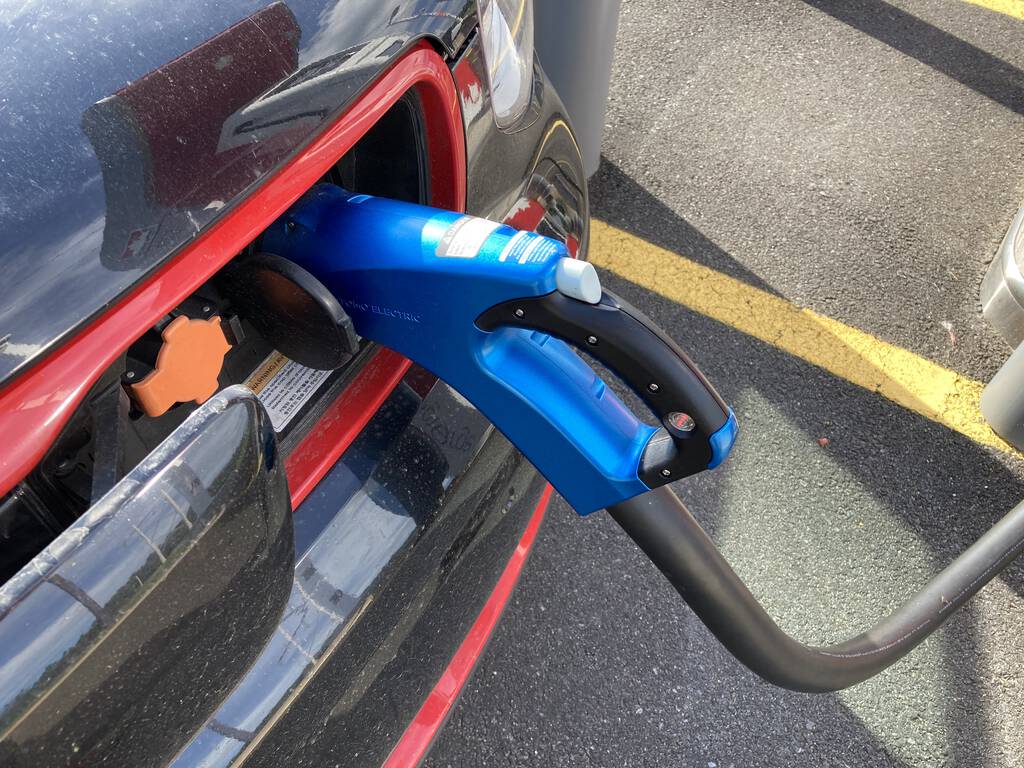
We pulled into our friend Yvonne’s house in Halifax at 2:15 p.m.; the door to door trip took us 6 hours, ferry and charging included, with the charging adding only 40 minutes to the trip.
We still had a range of 35 km once in Halifax, and that was more than enough for our mostly-rooted-in-place visit to the city.
On Tuesday morning we drove out early to the Petro-Can on Herring Cove Rd. to charge for the return trip. That charge took 15 minutes and cost us $3.82 to get us to 80% charge.
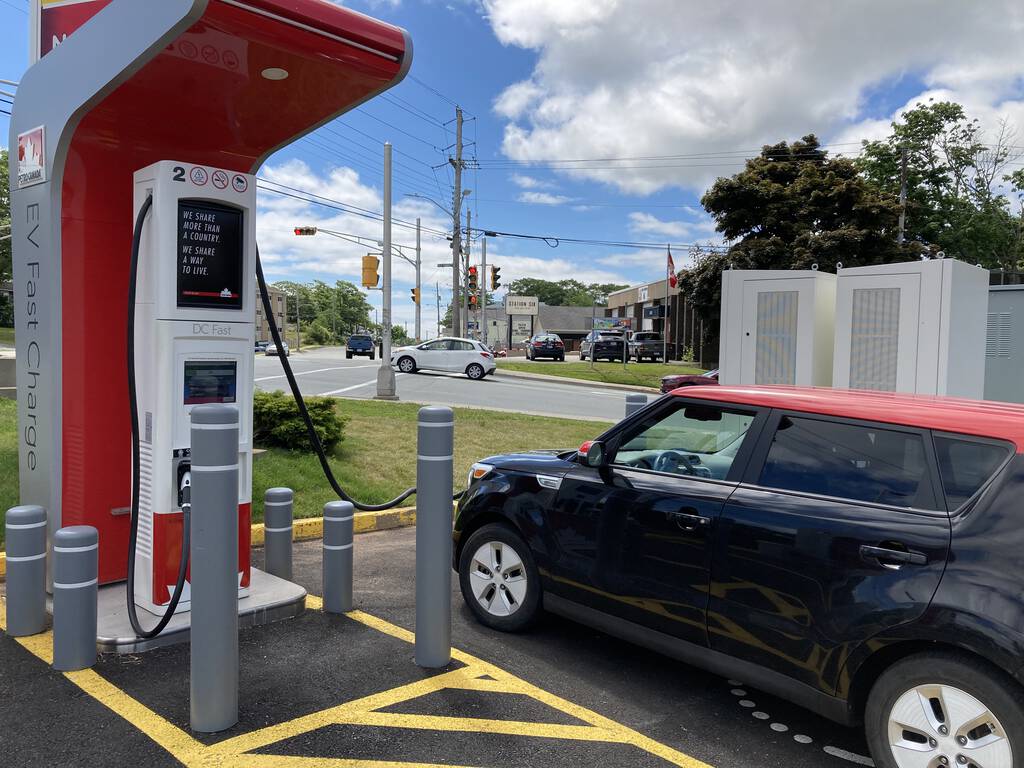
In the late afternoon we headed back, taking the same route in reverse, stopping in Stewiacke (15 minutes, $3.13) and Stellarton (20 minutes, $4.99). We arrived home with 50 km of range.
The total cost of the electricity for the trip breaks down like this:
| Leg of the Trip | Cost |
|---|---|
| Charlottetown to Stellarton (at home level 2) | $0.81 |
| Stellarton to Stewiacke | $4.35 |
| Stewiacke to Halifax | $3.79 |
| Halifax to Stewiacke | $3.82 |
| Stewiacke to Stellarton | $3.13 |
| Stellarton to Charlottetown | $4.99 |
| TOTAL | $20.89 |
The stops for charging weren’t onerous: a couple of 15 minute stops was just enough to use the washroom, check email, and have a quick rest; this was by far the least rushed and most civilized trip I’ve ever taken to Halifax.
In terms of “range anxiety,” the lowest the car’s range-estimator got was 19 km when we arrived in Stellarton on the trip home. That made me a little nervous, but not too much (we could have charged up to more than 80% in Stewiacke, and I could have driven a more reasonable 90 km/h, but chose instead to do 100 km/h). In theory we could have skipped Stellarton altogether and charged at the level 3 charger in Wood Islands, but I was reluctant to be in the wilds of late nite rural PEI with a charger I’d never used as my only ticket home; next time!
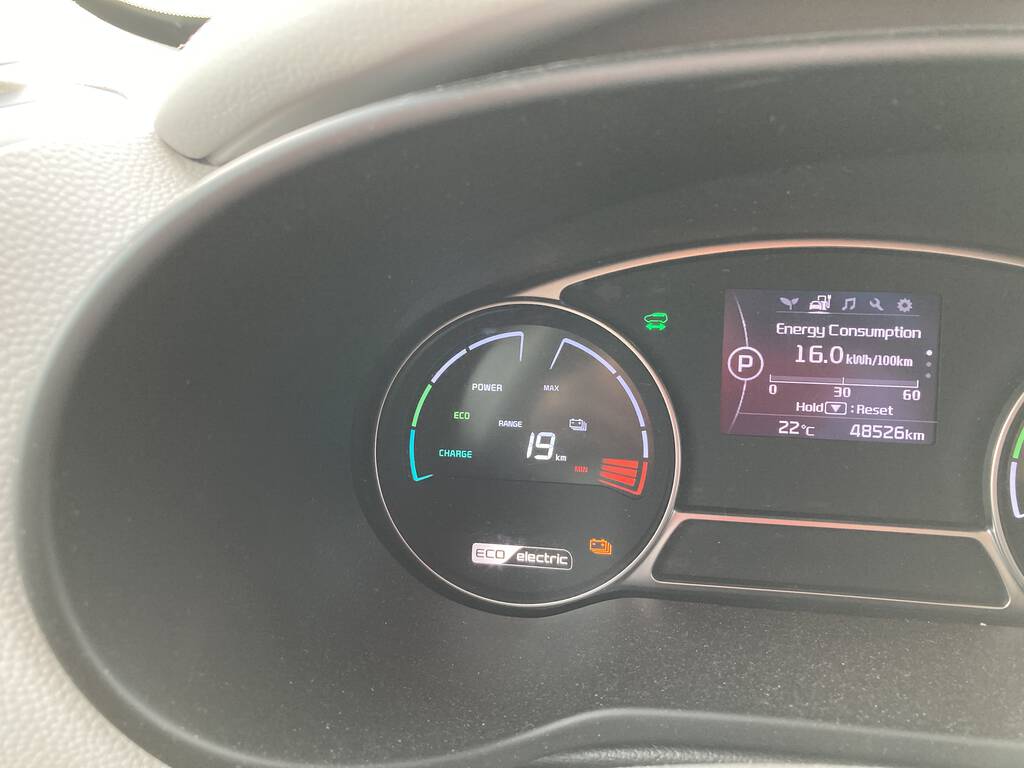
Our night and day in Halifax was an invaluable respite; even though the visit was short, I’m so glad we went.
Halifax is as ghost town-like as Charlottetown, perhaps even more so: we walked from Quinpool Road downtown to the harbour and back, stopping for tacos on the way, and didn’t see more than isolated pockets of people.
Otherwise we enjoyed spending time with Yvonne, eating quinoa salad and brownies and drinking strong coffee, with the occasional phone-in special guest family members.
Mask-wearing is much more prevalent in and around Halifax; not near total by any means, but a lot more than on the Island, where it remains rare. Everyone in the service industry was wearing a mask, save our taco server, who volunteered to put one on if we wanted.
As I write we’re about to board the Holiday Island ferry for the voyage home.
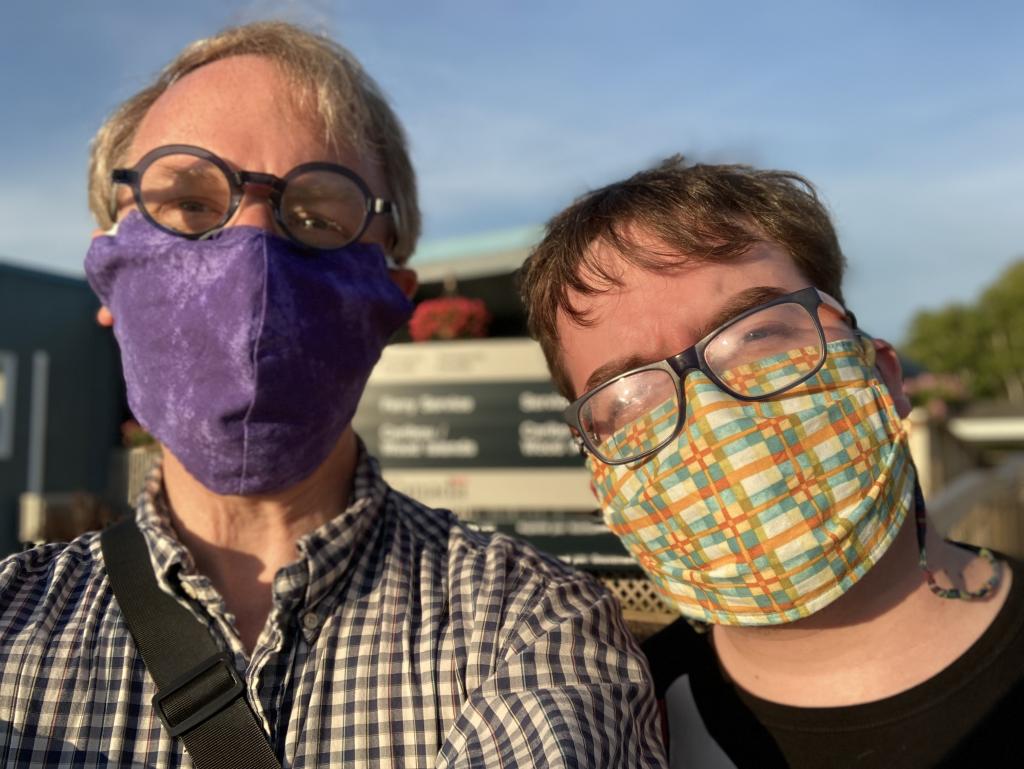
We drove off the ferry and into Nova Scotia. No checks. No ID. No forms. Pleasant and disquieting both.
When speculation of an “Atlantic Bubble” began—quarantine free travel to neighbouring provinces—I was skeptical: why on Earth would we want to leave PEI at a time like this!? And why would we want people from away in our midst (both for reasons of COVID and because it would disrupt our once in a lifetime tourist-free aerie).
But then, this weekend, with the Bubble a real thing as of Friday, our friend Yvonne texted from Halifax, inviting us to visit before she heads west to Saskatchewan next week.
There aren’t many people in the world I’d bubble for, but Yvonne is one of them, so plans were quickly thrown together: EV charging stations pinpointed, sandwiches made, support workers furloughed.
And so off we headed this morning, east to Wood Islands to catch the ferry to Caribou, NS. The plan is to fast-charge in Stellarton, and perhaps again on the other side of Truro.
We’ve packed a deck of cards, and plan to resist the urge to indulge in Big City Living: Yvonne has held out promise of pie-baking, and I suspect Crazy 8s will be played.
This will be our first trip off the Island in eight months.
Last night on the regular family zoom it was trivia night. Oliver made up the teams: OG Canada, OG USA, New Canada. I made up the questions, questions like:
The following pairs of NHL players are each related to each other. For each, what is their family relationship? Ty & Jack Arbour (brothers). Don & Riley Barber (father and son). Toe and Mike Blake (Uncle and Nephew). Red Kelly and Mark Jankowski (grand uncle and grand nephew). Guy Carbonneau & Brenden Morrow (in-laws).
and:
Here are some capital cities; what are their countries? Riga, Vilnius, Chișinău, Ulaanbaatar.
But also family-related questions like:
When Mike and Peter were little, Mike would tell stories about what fictional band of heros?
Surprisingly, the questions that seemed to stump almost everyone were:
Name three significant inventions that didn’t exist when Frances was born.
Name three significant inventions that didn’t exist when Karen was born.
Name three significant inventions that didn’t exist when Oliver was born.
The teams eventually squeaked out the answers, but it was a lot harder for them than you’d think (“Alexa” was one of the answers for the last one; surely there’s something more significant than that that’s come along in the last 20 years?!).
This got me thinking about nuclear weapons, which didn’t make the cut, but arguably have been one of the most significant inventions in the last century, if by “significant” we mean “existential threats to humanity.” Right up there with the internal combustion engine.
The threat of nuclear winter was a palpable part of my childhood in a way that people of Oliver’s generation will never understand. When The Day After aired in 1983, it seemed like a real possibility that it described our future. We watched Dr. Helen Caldicott in the 1982 documentary If You Love This Planet in high school and her warnings about the dangers of the nuclear age were more than just academic.
So the idea of going into a bunker when Buffalo, New York was hit by Soviet missiles, only to emerge sometime later into a much-changed world, seemed like something that might be part of my future, a possibility helpfully illustrated for my teenage imagination by Jason Robards, Steve Guttenberg and JoBeth Williams:
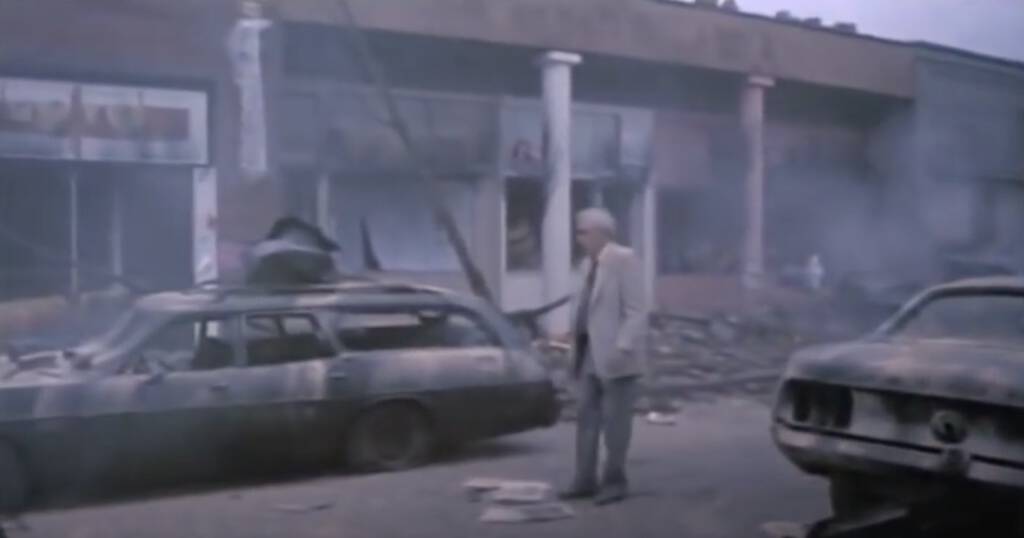
(Still from The Day After, 1983)
Today was the first day the Charlottetown Farmer’s Market was open, in something approaching its usual fashion, in 17 weeks, and there was no way that Oliver was not going to seize the opportunity to latch onto some pre-COVID routine comfort, so I concocted a reasonable simulation of our regular Saturday morning, mindful that the market, while open, was not operating at full strength and thus was going to be missing some important components.
I started the day making a smoothie-to-go for Oliver, as this was something I knew he’d be missing. Then we headed for Gallant’s in the industrial park, where Tyler helpfully had a couple of smoked salmon bagels waiting for us to pick up. Bagels and smoothie in hand, we parked in the UPEI parking lot across the street from the market, waving at friends and neighbours coming and going.
We managed to time our arrival perfectly: there was no line-up at all, as the early-birds were gone and the late-birds were yet to arrive.
The market was set up in a large loop in the parking lot, the market building itself closed. Oliver was initially flummoxed that the vendors were in a different order than our usual loop sees us encountering them: John Macfarlane was near the beginning, not the end, for example. Oliver was also perturbed that the instructions from the market were to move right along and not dawdle with the usual small-talk, something he described succinctly in an after-action blog post.
While the effect was rather more pleasant than emerging from a bunker into a post-apocalyptic wasteland, it did have the effect, more than anything else I’ve encountered in the months since March 7, of reinforcing that everything is different now.
We walked the out-of-order loop, making the best of the topsy-turviness, buying Peach My Cheeks iced tea from Willow, spinach and bok choy from Paul and Jen Offer, chocolates from Katlin, romaine lettuce from Sam, and perogies from Lori. We’ll be eating salads every meal this week, I think.
We did manage to fit in a tiny bit of kibitzing, not nearly enough for Oliver’s tastes, and not enough, thankfully, to exact penalties from the COVID-enforcement monitors.
The end effect was something equal parts pleasantly familiar and eerily different.
Who knew that 1971’s The Andromeda Strain was the film I should have been paying attention to when looking for the apocalypse in my future.
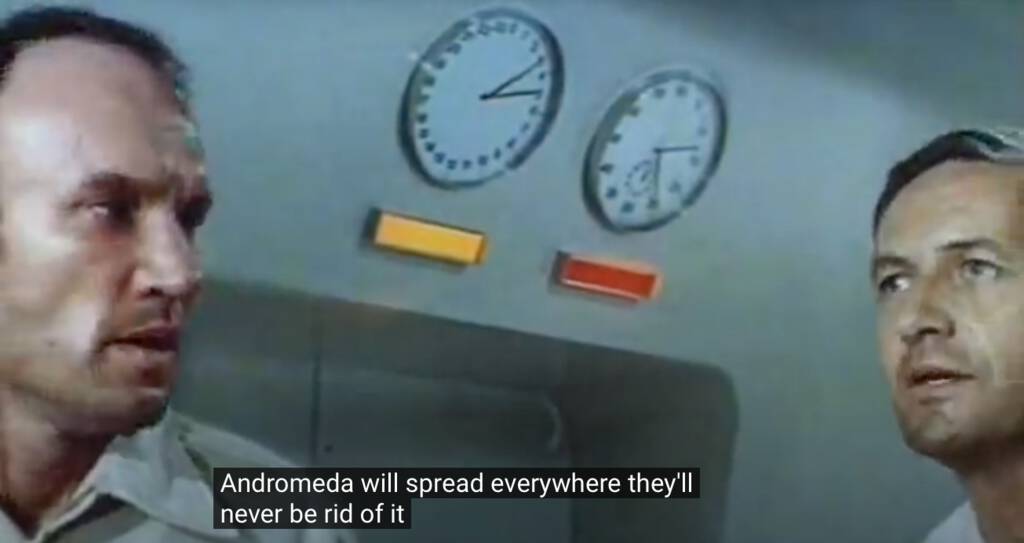
(Still from The Andromeda Strain, 1971)
Allan Rankin writes about Lowell Croken in the Eastern Graphic:
From the outset there was strong resistance to this new Waste Watch program.
Enter Lowell Croken, a junior level public servant at the time working as a mapping technician. His unique communication skills and proactive approach, and qualities of reasonableness and charm, made him the ideal person to assist the implementation of Waste Watch.
Not that Lowell accomplished this all by himself of course, but change often requires a special agent, and when it came to convincing a reluctant general public that separating garbage was important, he was the right person for the job.
Lowell Croken went on to serve as Prince Edward Island’s Chief Electoral Officer from 2005 to 2013. Now retired, he can look back on an outstanding career as a public servant, having served Islanders with honour and integrity.
There are other Lowell Crokens within government ranks, employees who make a big difference in positive and constructive ways, and I believe we should celebrate their often-unheralded contributions.
Lowell would be the last person on Earth to seek singling out for special mention like this, which is all the more reason that he deserves it: I worked with Lowell at Elections PEI for 17 years, and everything that Allan writes is true.
I’m proud to call both Lowell and Allan friends, and, truth be told, much of what Allan writes about Lowell could equally be said of Allan.
My PiSound arrived today in the post from Lithuania: it’s a sound card for a Raspberry Pi, and will be the heart of my plot to create a box to stream the sounds of Prince Edward Island to the world 24/7.
The PiSound itself, and its accompanying snap-together case, as well as the website that describes, sells and documents them, are all things of beauty.

Clint Eastwood talks to Johnny Carson on the Tonight Show about how he was pegged to fill in for the absent Charlton Heston at the 1973 Academy Awards.
Here’s the broadcast itself, with Eastwood appearing at 11:25.
According to the Academy, “Charlton Heston got a flat tire on the way to the ceremony and arrived late.”
Oliver was distressed this morning that almost all of the usual Canada Day routines had been erased from the schedule, either due Catherine’s death or COVID-19. So there was to be no music in Victoria Park, no Goat Parade in Rustico, no seafood at the Blue Mussel Café, no fireworks. While I might have preferred that his distress had been expressed with less ferocity, I had sympathy for its roots, and resolved that we should carve some new July 1 traditions out of the darkness.
So here’s what we did:
- Drove to Souris. It was a beautiful day: sunny with a touch of mist, not too cold, not too hot.
- Had lunch at The Poké Shack on the beach. Excellent.
- Charged our Kia Soul EV at the new fast charger Irving on Main Street.
- Takeout cold brew coffee and a smoothie at Evergreen Café. Excellent.
- A walk on Sally’s Beach on Spry Point.
- Hot fudge sundaes at Gillis’ Drive-in in Montague.
- A visit with our old friends Wennie and Kenny in downtown Montague.
- Takeout fish & chips from Water-Prince Corner Shop.
We will finish up in a few minutes with something called “virtual fireworks” on the CBC, the nature of which I have no idea.
We missed Catherine–we talked about her many times over the day–and Rustico and the goats and the rest. But we managed to enjoy the day as best we could, and, at the very least, ended on a higher note than we started.
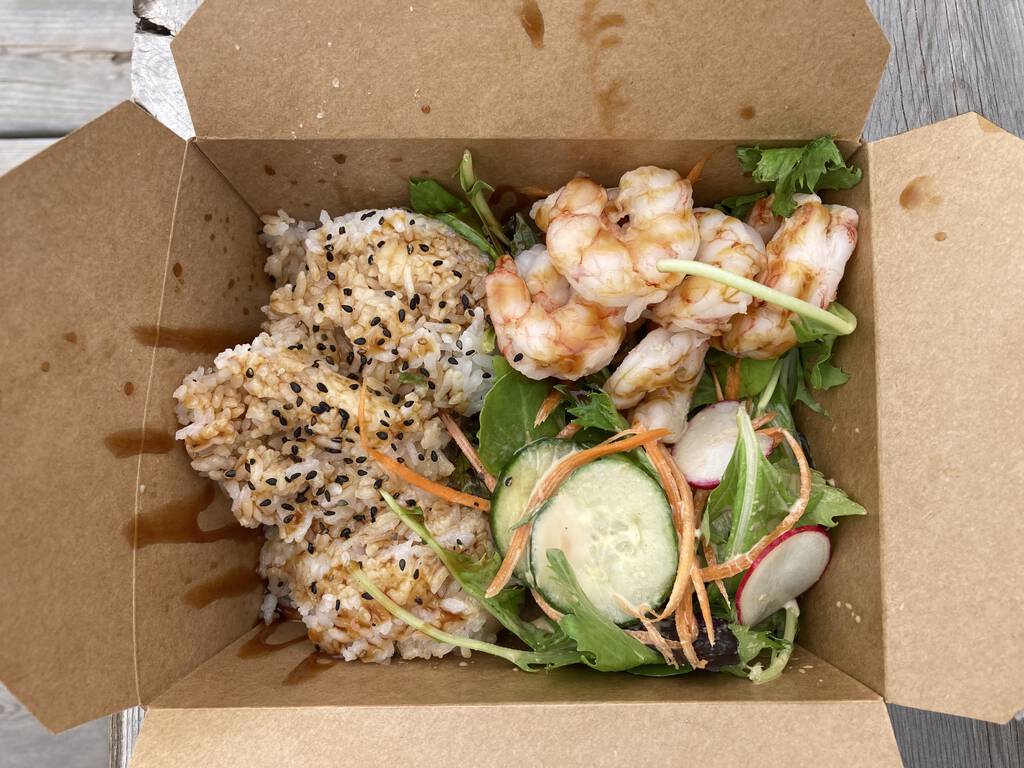
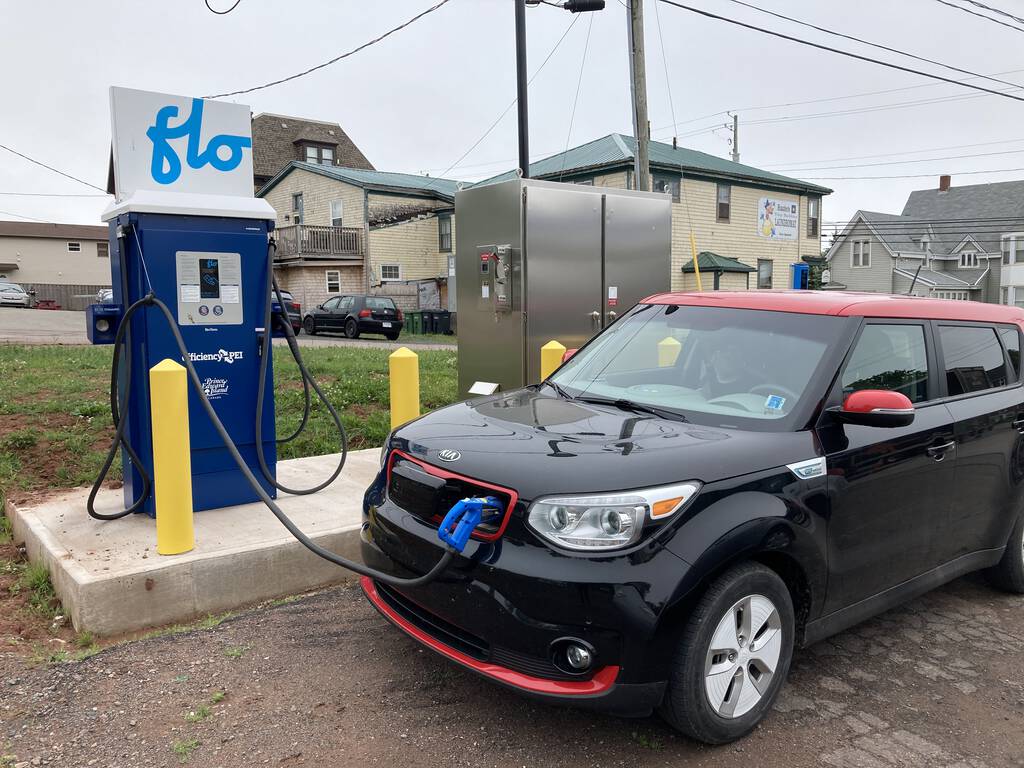
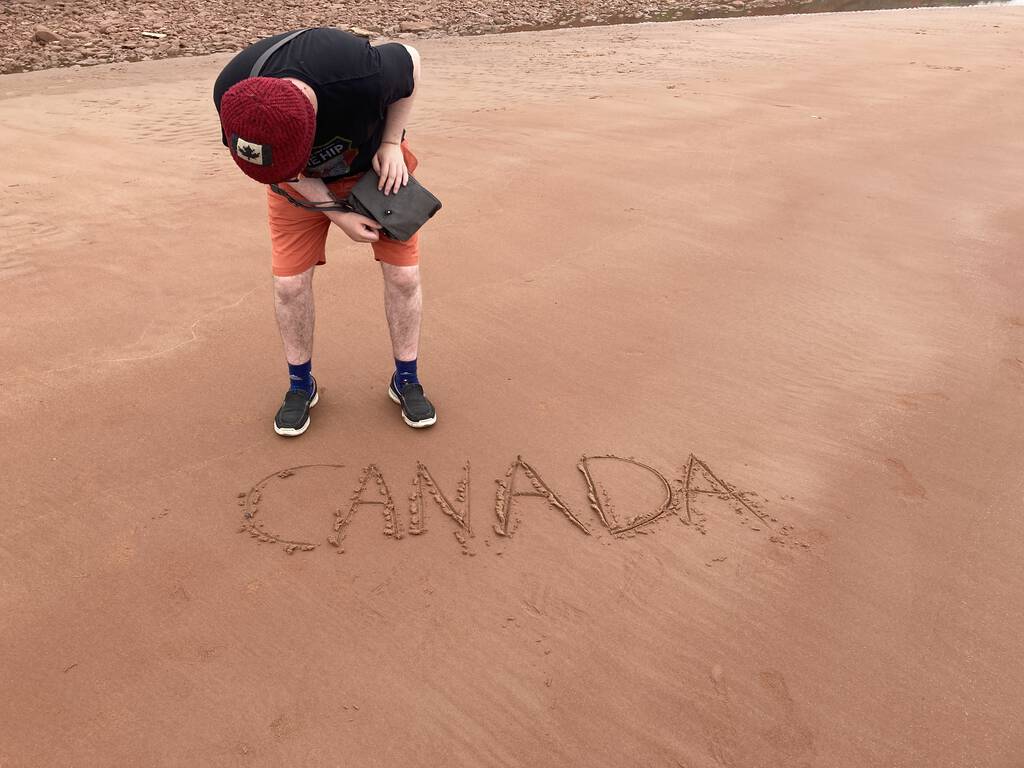
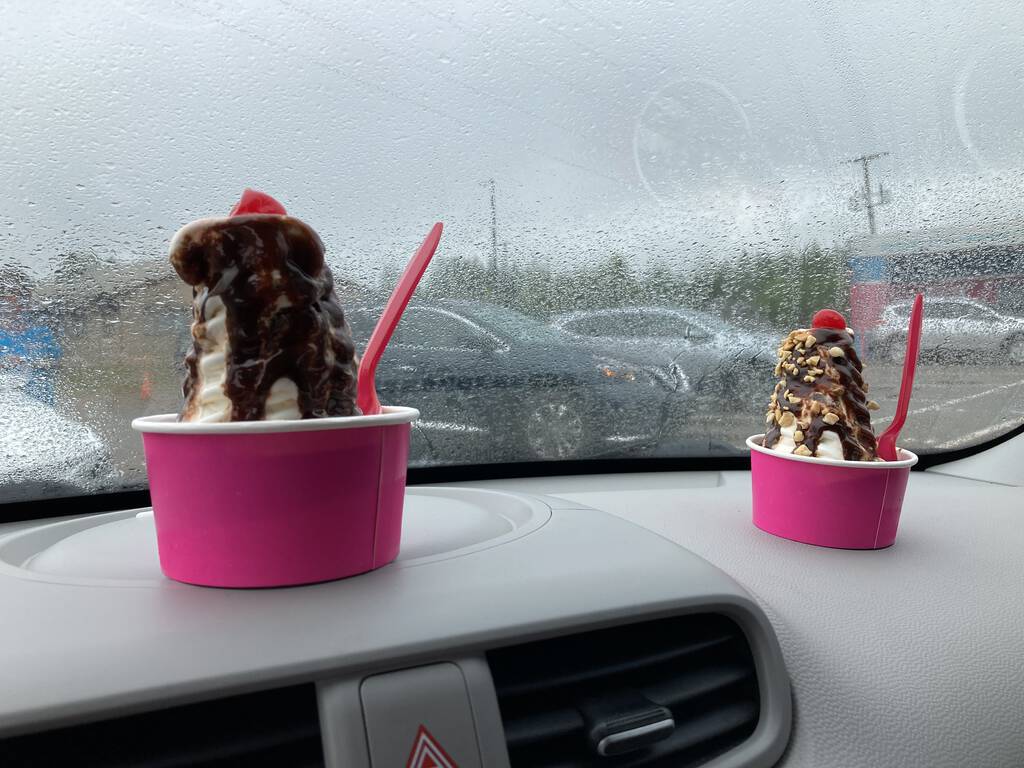

Packed into this sign, posted at the head of a trail at Sally’s Beach in eastern PEI, is a potent set of only-in-Canada assumptions: that anyone will read such a wordy sign, that anyone has the vaguest notion of what 1.83 meters apart represents, that we require the paternalistic advice of the state to guide what are ultimately common sense decisions.
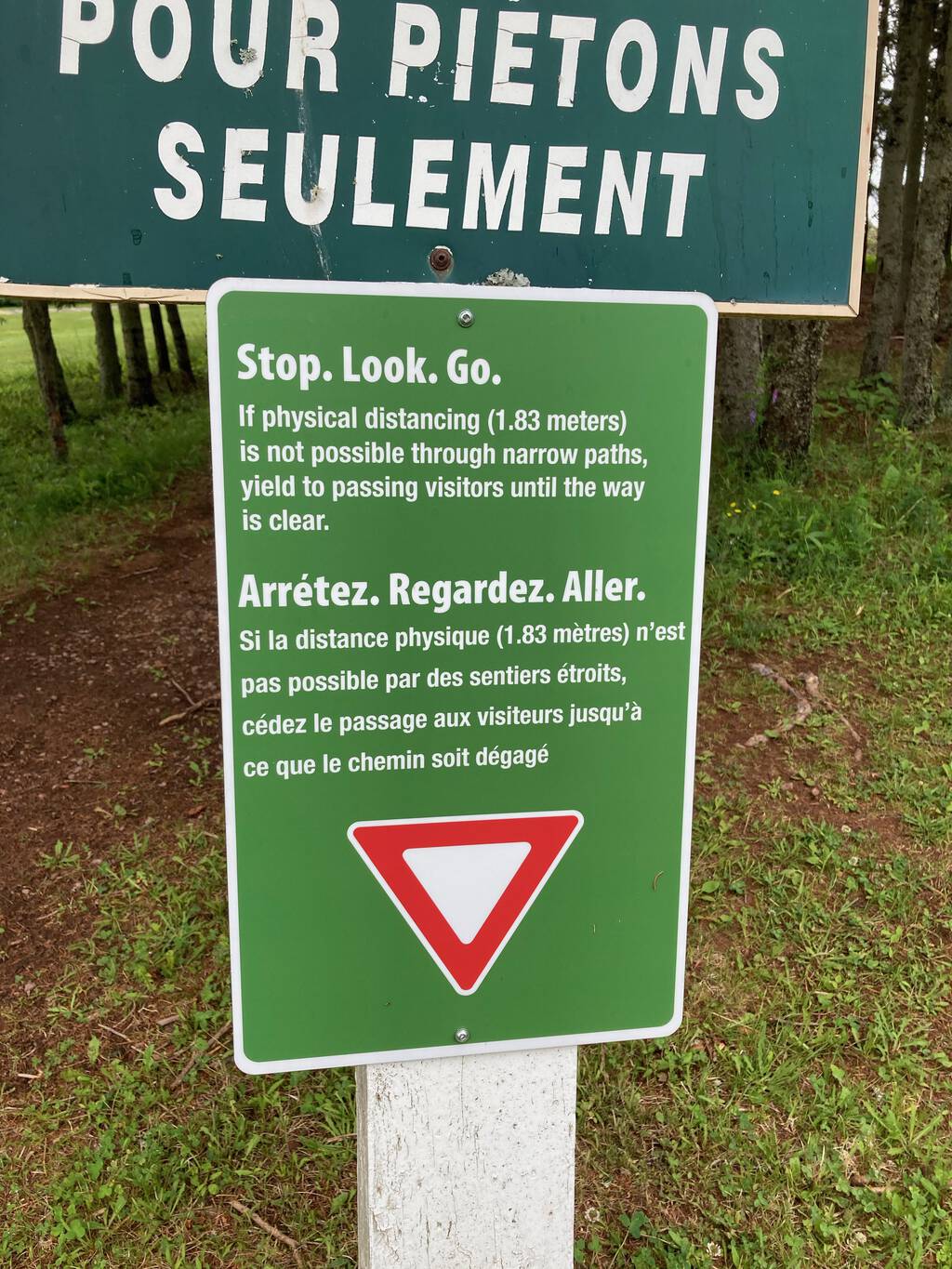
 I am
I am